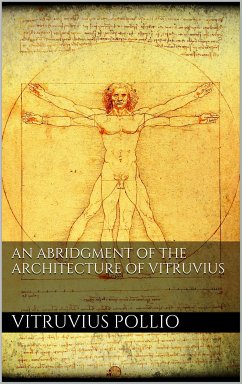
An Abridgment of the Architecture of Vitruvius (eBook, ePUB)

PAYBACK Punkte
0 °P sammeln!
This translation was first published in 1692. According to Wikipedia: "Marcus Vitruvius Pollio (born c. 80-70 BC, died after c. 15 BC) was a Roman author, architect, and engineer during the 1st century BC perhaps best known for his multi-volume work entitled De Architectura. By his own description Vitruvius served as a ballista (artilleryman), the third class of arms in the military offices. He likely served as chief of the ballista (senior officer of artillery) in charge of doctores ballistarum (artillery experts) and libratores who actually operated the machines."
Dieser Download kann aus rechtlichen Gründen nur mit Rechnungsadresse in A, B, BG, CY, CZ, D, DK, EW, E, FIN, F, GR, H, IRL, I, LT, L, LR, M, NL, PL, P, R, S, SLO, SK ausgeliefert werden.













